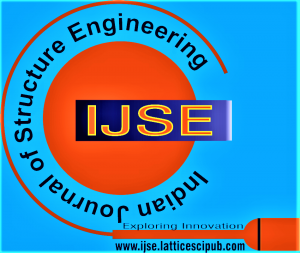Study of Rail Structure Interaction on Double-Decker integrated bridge with Metro and Highway Structure
Tamilselvan M1, Koventhan V2, Gananadh Chundi3
1Tamilselvan M, Department of Bridges MMSB Consult Sdn Bhd, Chennai (Tamil Nadu), India.
2Koventhan V, Department of Bridges MMSB Consult Sdn Bhd, Chennai (Tamil Nadu), India.
3Gananadh Chundi, Department of Bridges MMSB Consult Sdn Bhd, Chennai (Tamil Nadu), India.
Manuscript received on 28 August 2023 | Revised Manuscript received on 09 September 2023 | Manuscript Accepted on 15 November 2023 | Manuscript published on 30 November 2023 | PP: 1-11 | Volume-3 Issue-2, November 2023 | Retrieval Number: 100.1/ijse.B1317113223 | DOI:10.54105/ijse.B1317.113223
Open Access | Editorial and Publishing Policies | Cite | Zenodo | Indexing and Abstracting
© The Authors. Published by Lattice Science Publication (LSP). This is an open-access article under the CC-BY-NC-ND license (http://creativecommons.org/licenses/by-nc-nd/4.0/)
Abstract: In the metro rail system, Long Welded Rails (LWR) have been used for less maintenance, smooth & safe ride at higher speeds. The arrangement of connecting rail and deck system causes an interaction effect in force transfer. The study of this effect in the structure is Rail Structure Interaction (RSI) analysis. In this study, the behavior of double-decker integrated structure, rail stresses and relative deformation are studied due to the bending behavior of the deck, bearing articulation & support stiffness with the proposed geometrical arrangement of the bridge and applicable loading as per standards. The effect of RSI analysis and limitations of additional stresses are referred with the guidance of UIC standards & RDSO guidelines. The double-decker elevated viaduct structure is proposed with a first level highway deck carrying highway loading and second level metro system carrying metro loading. In highway bridge deck, the decks are proposed with four span continuous to avoid discomfort due to more number of expansion joints and thereby provide smooth riding for passengers. The effect of RSI is studied in this paper by considering the above complexity of two-level superstructure with a different type of superstructure at the metro level due to the track requirement like U girder deck system at each track, I girder deck system as a single deck for both the tracks at the cross over / pocket track locations and I girder deck system at highway level with deck continuity. A finite element analysis is performed using the analytical tool MIDAS CIVIL software to study the interaction mechanism for this double-decker bridge structure. For this study, rail and deck (unballasted) are linked with a multilinear elastic spring as recommended in UIC 774-3R and other boundary conditions as per IRS & IRC standards. This paper discusses the behavior of structure from the results of the rail stresses and forces to the substructure due to thermal and live load effects at both level Metro Rail system and Highway Road systems.
Keywords: Double-decker bridge, Rail structure interaction (RSI), Metro Rail system, Highway bridge, Long welded rail (LWR), Integrated structure.
Scope of the Article: Infrastructure Engineering
